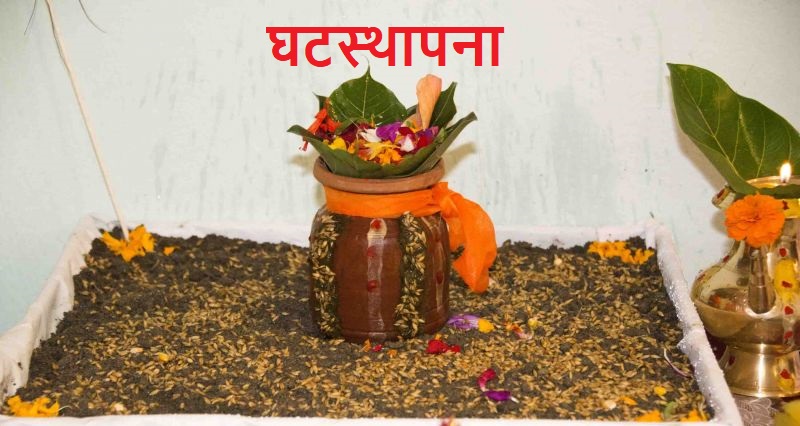Today is Ghatasthapana, marked as the first day of Dashain. Dashain is considered to have officially started today. Navratri also begins today.Methodically, after the installation of Ghat or Ghada, the worship of Durga in the form of Shaktiswarupa is performed which is called Ghatasthapana. On the day of Vijaya Dashami, Prasad of Goddess Durga is accepted by anointing with the water of Purna Kalash installed today.
The auspicious time for Ghatasthapana is 10:23 am today.Ghatasthapana is performed today by worshipping Chitra Nakshatra owner Twashta ( Vishwakarma) and owner of Vaidhriti Yog Aditi, Mother of Gods. At the time of Chitra and Vaidhriti yoga, worship of Rudra, Surya, Soma and Mrityunjaya is performed along with Twashta and Aditi.Today, Sanatan Vedic Hindu religious people across the country keep Jamra(sacredly grown plants) in their houses and temples.
Seeds of barley are sown in the soil mixed with a little sand, inside a pooja room of the house or a clean place inside the house, placing a Diyo, Kalash and Ganesh. Recently, it has been found that rice, corn and wheat are also used along with barley while sowing Jamara. Jamara is worshipped every day until the last day of Navratri.
Seeds are grown in such a way that no light penetrates into them and the sprouts of this grain germinated for 10 days are used as Jamra.Jamara is offered as a blessing by elders on the tenth day of Dashain, which is known as Tika.
During Navratri, the three forms of Goddess Durga, Mahakali, Mahalakshmi and Mahasaraswati, are ritually invoked and worshipped. Mahakali is the symbol of power, Mahalakshmi is the symbol of wealth and opulence and Mahasaraswati is worshipped as the symbol of learning and wisdom.
The 15 days from Ashwin Shukla Pratipada to Purnima are called Durga Paksha and special worship is done on the occasion of Durga Paksha in the nine forms taken by Durga to kill the demons including Chanda, Mund, Shumbha, Nishumbha and Raktavija.
Shailaputri is worshipped on the first day of Durga Paksha, Brahmacharini on the second day, Chandraghanta on the third day, Kushmanda on the fourth day, Skandamata on the fifth day, Katyayani on the sixth day, Kalaratri on the seventh day, Mahagauri on the eighth day and Siddhidatri on the ninth day. These nine forms of Durga are also called Navadurga. Therefore, Dasai is celebrated as a symbol of the victory of truth over falsehood and divine power over demonic power.
Today onwards, the worship of Goddess Durga in the form of Shaktiswarupa begins according to the Vedic method, in the Dasainghar located in the Hanumandhoka Palace in Kathmandu.The culture of putting Jamra on the head on the day of Tika is considered an important part of Dashain, a great festival of Sanatan Vedic Hindus.


 NP
NP
